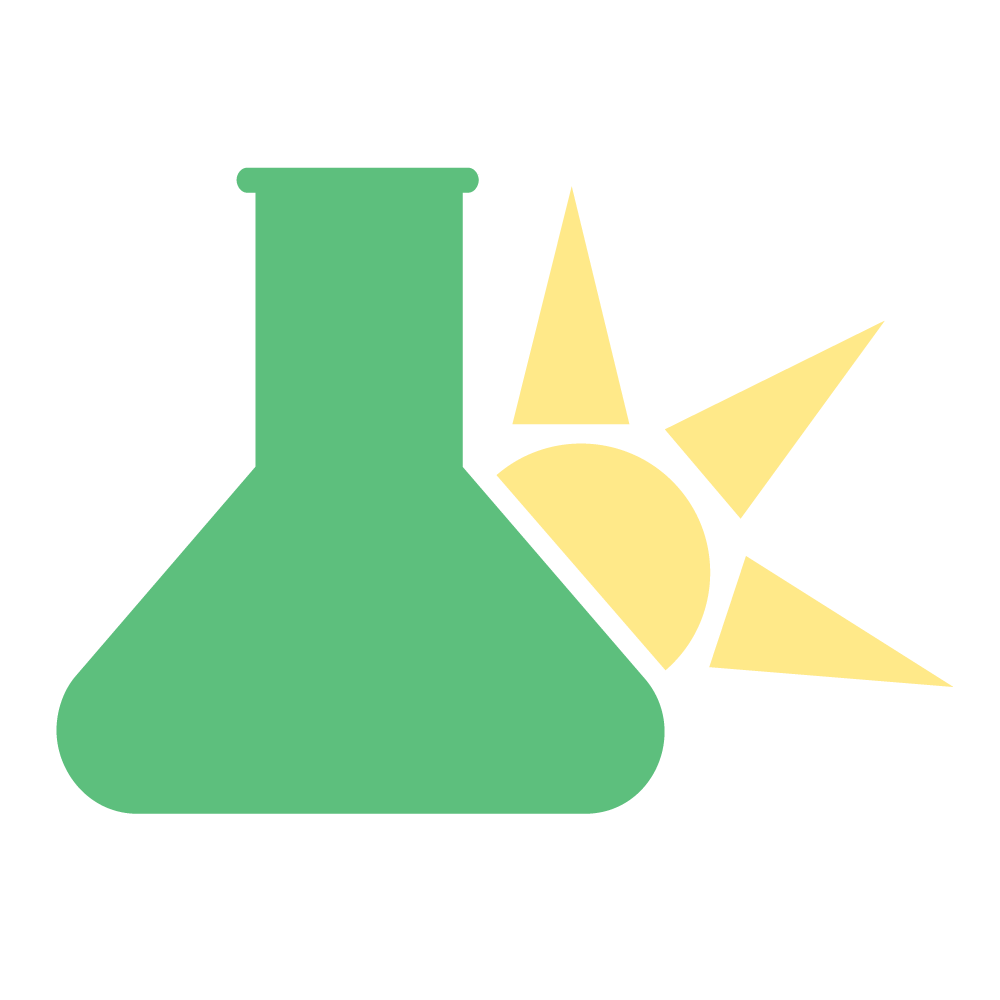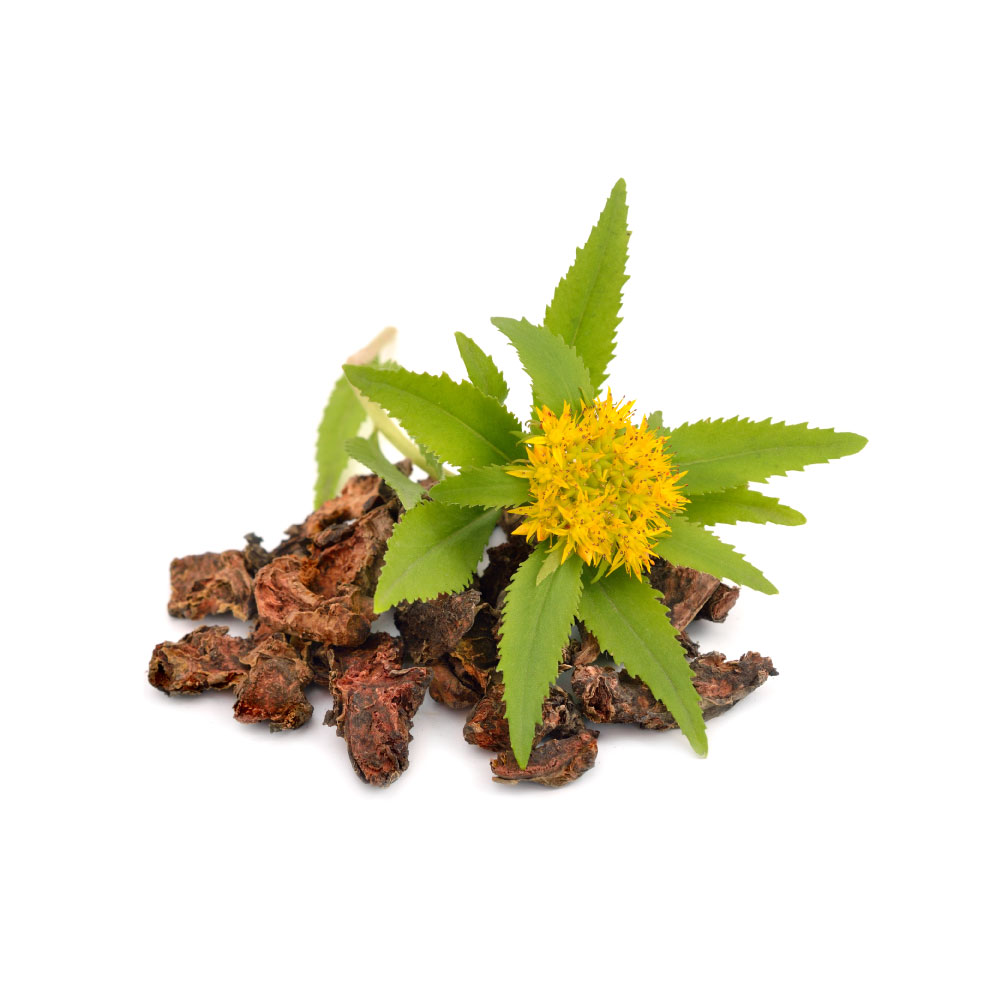Rhodiola Summary
Rhodiola was made famous by some earlier research done by Russian scientists in the 1960's. Although a lot of this research still hasn't been released to the public, there has been a lot of new studies put forward to make up for this loss.
Rhodiola is well revered as an adaptogen for treating fatigue, cognitive decline, depression, and for athletic enhancement. It's considered to be a mild stimulant, though it doesn't produce the "wired" feeling many other stimulants produce. It increases energy levels and makes us more tolerant of stressful situations.
Although there is still a lot of research lacking, we know that Rhodiola can reduce cortisol levels in the body after exposure to stress, however, the details on how this interaction exists is still not well understood. There is also a great deal of confusion around which chemicals are active in the herb, some studies showing the rosavins, others tyrosol and the rhodiolasides.
As a result, each manufacturer tends to have a preference for one chemical group over the other in their products.
What is Rhodiola Used For?
*Rhodiola rosea* is mainly used for its adaptogenic qualities, especially those specific to lowering cortisol levels. It's reliable for improving fatigue in debilitated or chronically fatigued people, as well as those experiencing generalized adaptive disorder, depression, or acute periods of extreme stress.
Rhodiola is a popular nootropic additive for increasing focus and mental endurance and is popular among athletes for increasing physical endurance as well.
Herb Details: Rhodiola
Weekly Dose
- (1:2 Liquid Extract)
20–40 mL - View Dosage Chart
Part Used
- Root/Rhizome
Family Name
- Crassulaceae
Distribution
- Northern climates of North America, Asia, and Europe
Herbal Actions:
- Adaptogen
- CNS Stimulant (mild)
- Antidepressant
- Cardioprotective
- Nootropic
Constituents of Interest
- Rosavin
- Tyrosol
- Salidroside
- Rhodiolaside
Common Names
- Rhodiola
- Rose Root
- Arctic Root
- Golden Root
- King's Crown
CYP450
Unknown
Duration of Use
- Long-term use of rhodiola is acceptable.
Botanical Information
Although Rhodiola rosea is the preferred species used, there are many species used in various indigenous medical systems such as Rhodiola alterna, Rhodiola brevipetiolata, Rhodiola crenulata, Rhodiola kirilowii, Rhodiola quadrifida, Rhodiola sachalinensis, and Rhodiola sacra.
The Crassulaceae family contains 34 genera and 1400 species. Most of the plants in this family can be found in colder climates.
Another medicinal species in this family is Kalanchoe.
Habitat Ecology, & Distribution:
Rhodiola grows at high altitude, mountainous regions of Europe, Asia, the Arctic, and North America.
Pharmacology & Medical Research
+ Altitude Sickness
Salidroside and Tyrosol from Rhodiola cerrulea extracts have been shown to regulate AMPK [11], which plays a major role in energy homeostasis [10]. It was also shown to maintain sodium channel transport by preserving NA+, K+, ATPase activity. The authors concluded that this mechanism may be responsible for Rhodiolas ability to reduce the symptoms of altitude sickness, particularly HAPE [11].
+ CNS Stimulant
Numerous clinical trials have demonstrated the CNS stimulating activity of Rhodiola rosea [8] based on various cognitive and fatigue scores.
Other studies have found the use of rhodiola at varying doses inconclusive as a stimulant [7].
+ Memory & Cognitive Performance
Rhodiola extracts have been shown in animal models to improve learning capacity and short/long-term memory in animals trained to perform certain tasks [2].
Rhodiola has been shown to inhibit monoamine oxidase (both MAO-A and MAO-B) in animal studies [4].
+ Depression
MAO-A inhibitors are effective in the treatment of depression [20]. Rhodiola has been shown to inhibit MAO-A & B in animal studies [4]. Other animal studies investigating the use of rhodiola on depression has shown a non-dose dependent improvement on depression scores in mice, which is due to the tyrosin and rhodiolaside content specifically [16, 18, 19].
A randomized double-blind clinical trial using a standardized Rhodiola rosea extract showed a significant antidepressant activity in the treatment group compared to placebo. This was based on various depressive symptoms including insomnia, emotional instability, and somatization. [17].
+ Stress And Fatigue (Adaptogenic)
A group of 56 healthy physicians in a double-blind randomized clinical trial were either given Rhodiola rosea extracts or placebo control for 2 weeks. Physicians were chosen based on criteria that investigated the likelihood that these physicians would experience mental exhaustion during a normal shift. A series of tasks were then given after each night shift to investigate any changes on mental fatigue as measured by a set of complex tasks. All of the physicians treated with Rhodiola rosea were noted to show improved test scores compared to those not treated with the herb. These effects were observed to be most active after two weeks of use, and not a single adverse reaction was reported during the study. [3].
Another study investigating the mental and physical effects of a long term, low dose (SHR-5 50 mg) on students during examination periods found significant improvements on test scores among the treatment group [9]. They were looking for the presence of mental and physical fatigue indications. The only test that showed no improvement in this study was the tapping test (muscular activation).
A study investigating the effects of Rhodiola rosea on free cortisol levels in chronically fatigues patients noted a reduction in cortisol levels after just a single treatment, and significantly after a 28-day course of treatment [21]. Rhodiola was also shown to reduce serum blood levels of cortisol after a stressful event in rabbits [22].
Animal research has shown that Rhodiola rosea extracts can reduce the expression of c-Fos in the hypothalamus of rats [23]. The expression of this gene is considered to be a valuable marker for identifying the activation of cells in the central nervous system associated with the stress response [24]. This suggests the mechanism of action for Rhodiola rosea on reducing cortisol levels is the result of HPA modulation in the hypothalamus, such as increasing feedback sensitivity and therefore reducing overall CRH release rather than acting directly on the adrenal glands.
+ Withdrawal
A Rhodiola rosea extract was shown to improve withdrawal symptoms in mice, with a noted increase in 5HT activity in treated animals. [1].
Clinical Applications Of Rhodiola:
Rhodiola serves as a reliable adaptogen with little to no side effects noted in any of the studies listed. It's useful for those suffering from high-stress conditions, chronically fatigued, or depressed.
This herb is also useful for increasing athletic performance in athletes and reducing the chances of being affected by altitude sickness when traveling above 2500 meters.
Cautions:
Caution when using Rhodiola with mania as the mental stimulation may produce negative side effects.
Recent Blog Posts:
References
Mannucci, C., Navarra, M., Calzavara, E., Caputi, A. P., & Calapai, G. (2012). Serotonin involvement in Rhodiola rosea attenuation of nicotine withdrawal signs in rats. Phytomedicine, 19(12), 1117-1124. [animal studies]
Petkov, V. D., Yonkov, D., Mosharoff, A., Kambourova, T., Alova, L., Petkov, V. V., & Todorov, I. (1986). Effects of alcohol aqueous extract from Rhodiola rosea L. roots on learning and memory. Acta physiologica et pharmacologica Bulgarica, 12(1), 3-16. [animal studies]
Darbinyan, V., Kteyan, A., Panossian, A., Gabrielian, E., Wikman, G., & Wagner, H. (2000). Rhodiola rosea in stress induced fatigue—a double blind cross-over study of a standardized extract SHR-5 with a repeated low-dose regimen on the mental performance of healthy physicians during night duty. Phytomedicine, 7(5), 365-371. [RCT]
Van Diermen, D., Marston, A., Bravo, J., Reist, M., Carrupt, P. A., & Hostettmann, K. (2009). Monoamine oxidase inhibition by Rhodiola rosea L. roots. Journal of ethnopharmacology, 122(2), 397-401. [animal studies]
Ganzera, M., Yayla, Y., & Khan, I. A. (2001). Analysis of the marker compounds of Rhodiola rosea L.(golden root) by reversed phase high performance liquid chromatography. Chemical and pharmaceutical bulletin, 49(4), 465-467. [chemical analysis]
Panossian, A., Wikman, G., & Sarris, J. (2010). Rosenroot (Rhodiola rosea): traditional use, chemical composition, pharmacology and clinical efficacy. Phytomedicine, 17(7), 481-493. [review article]
Shevtsov, V. A., Zholus, B. I., Shervarly, V. I., Vol'skij, V. B., Korovin, Y. P., Khristich, M. P., ... & Wikman, G. (2003). A randomized trial of two different doses of a SHR-5 Rhodiola rosea extract versus placebo and control of capacity for mental work. Phytomedicine, 10(2), 95-105. [RCT]
Panossian, A., & Wagner, H. (2005). Stimulating effect of adaptogens: an overview with particular reference to their efficacy following single dose administration. Phytotherapy Research, 19(10), 819-838. [Review]
Spasov, A. A., Wikman, G. K., Mandrikov, V. B., Mironova, I. A., & Neumoin, V. V. (2000). A double-blind, placebo-controlled pilot study of the stimulating and adaptogenic effect of Rhodiola rosea SHR-5 extract on the fatigue of students caused by stress during an examination period with a repeated low-dose regimen. Phytomedicine, 7(2), 85-89. [RCT].
Lee, S. Y., Shi, L. S., Chu, H., Li, M. H., Ho, C. W., Lai, F. Y., ... & Chang, T. C. (2013). Rhodiola crenulata and its bioactive components, salidroside and tyrosol, reverse the hypoxia-induced reduction of plasma-membrane-associated Na, K-ATPase expression via inhibition of ROS-AMPK-PKCξ pathway. Evidence-Based Complementary and Alternative Medicine, 2013. [in vitro].
Reznick, R. M., & Shulman, G. I. (2006). The role of AMP‐activated protein kinase in mitochondrial biogenesis. The Journal of physiology, 574(1), 33-39.
Kerharo, J., & Adam, J. G. (1974). La pharmacopée sénégalaise traditionnelle: plantes médicinales et toxiques. (Pharmacopoeia).
Steinegger, E., & Hansel, R. (1992). Pharmakognosie 5 Aufl. Kap 6.2. 1. Freie Phenolcarbonsauren Springer Verlag Berlin. (Pharmacopoeia).
Hjaltalin, O. J. (1830). Islenzk grasafrædi. Koben havn.
insert
Kurkin, V. A., Dubishchev, A. V., Ezhkov, V. N., Titova, I. N., & Avdeeva, E. V. (2006). Antidepressant activity of some phytopharmaceuticals and phenylpropanoids. Pharmaceutical Chemistry Journal, 40(11), 614-619.
Darbinyan, V., Aslanyan, G., Amroyan, E., Gabrielyan, E., Malmström, C., & Panossian, A. (2007). Clinical trial of Rhodiola rosea L. extract SHR-5 in the treatment of mild to moderate depression. Nordic journal of psychiatry, 61(5), 343-348.
Perfumi, M., & Mattioli, L. (2007). Adaptogenic and central nervous system effects of single doses of 3% rosavin and 1% salidroside Rhodiola rosea L. extract in mice. Phytotherapy Research, 21(1), 37-43.
Panossian, A., Nikoyan, N., Ohanyan, N., Hovhannisyan, A., Abrahamyan, H., Gabrielyan, E., & Wikman, G. (2008). Comparative study of Rhodiola preparations on behavioral despair of rats. Phytomedicine, 15(1-2), 84-91.
Priest, R. G., Gimbrett, R., Roberts, M., & Steinert, J. (1995). Reversible and selective inhibitors of monoamine oxidase A in mental and other disorders. Acta Psychiatrica Scandinavica, 91(s386), 40-43.
Olsson, E. M., von Schéele, B., & Panossian, A. G. (2009). A randomised, double-blind, placebo-controlled, parallel-group study of the standardised extract shr-5 of the roots of Rhodiola rosea in the treatment of subjects with stress-related fatigue. Planta medica, 75(02), 105-112.
Panossian, A., Hambardzumyan, M., Hovhanissyan, A., & Wikman, G. (2007). The adaptogens Rhodiola and Schizandra modify the response to immobilization stress in rabbits by suppressing the increase of phosphorylated stress-activated protein kinase, nitric oxide and cortisol. Drug target insights, 2, 117739280700200011.
Xia, N., Li, J., Wang, H., Wang, J., & Wang, Y. (2016). Schisandra chinensis and Rhodiola rosea exert an anti-stress effect on the HPA axis and reduce hypothalamic c-Fos expression in rats subjected to repeated stress. Experimental and therapeutic medicine, 11(1), 353-359.
Luckman, S. M., Dyball, R. E., & Leng, G. (1994). Induction of c-fos expression in hypothalamic magnocellular neurons requires synaptic activation and not simply increased spike activity. Journal of Neuroscience, 14(8), 4825-4830.














As COVID-19 continues to spread around the world, we’re getting a lot of questions on what the potential role of herbal medicine is during the outbreak. Learn how the virus works and how to limit your chances of transmission.